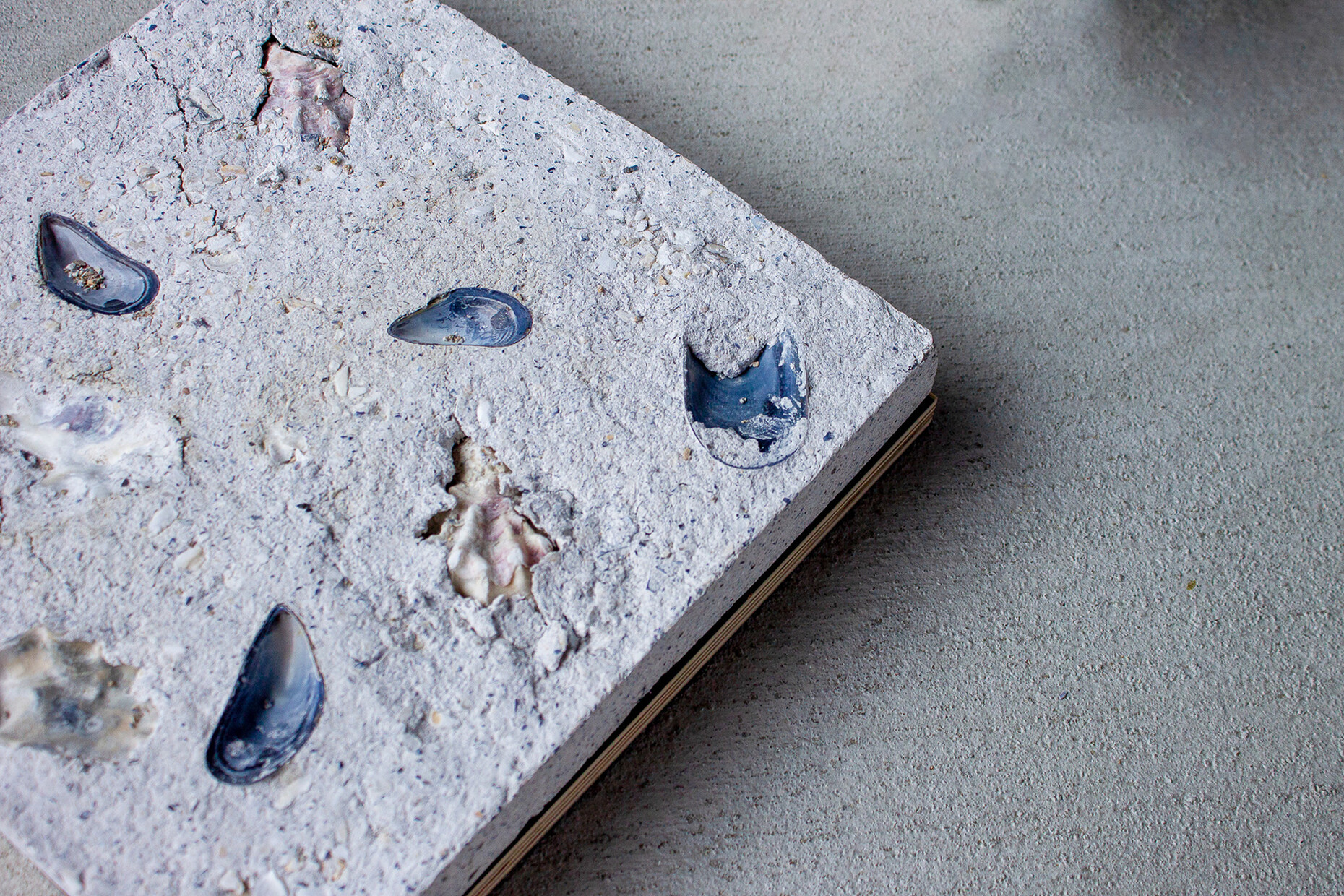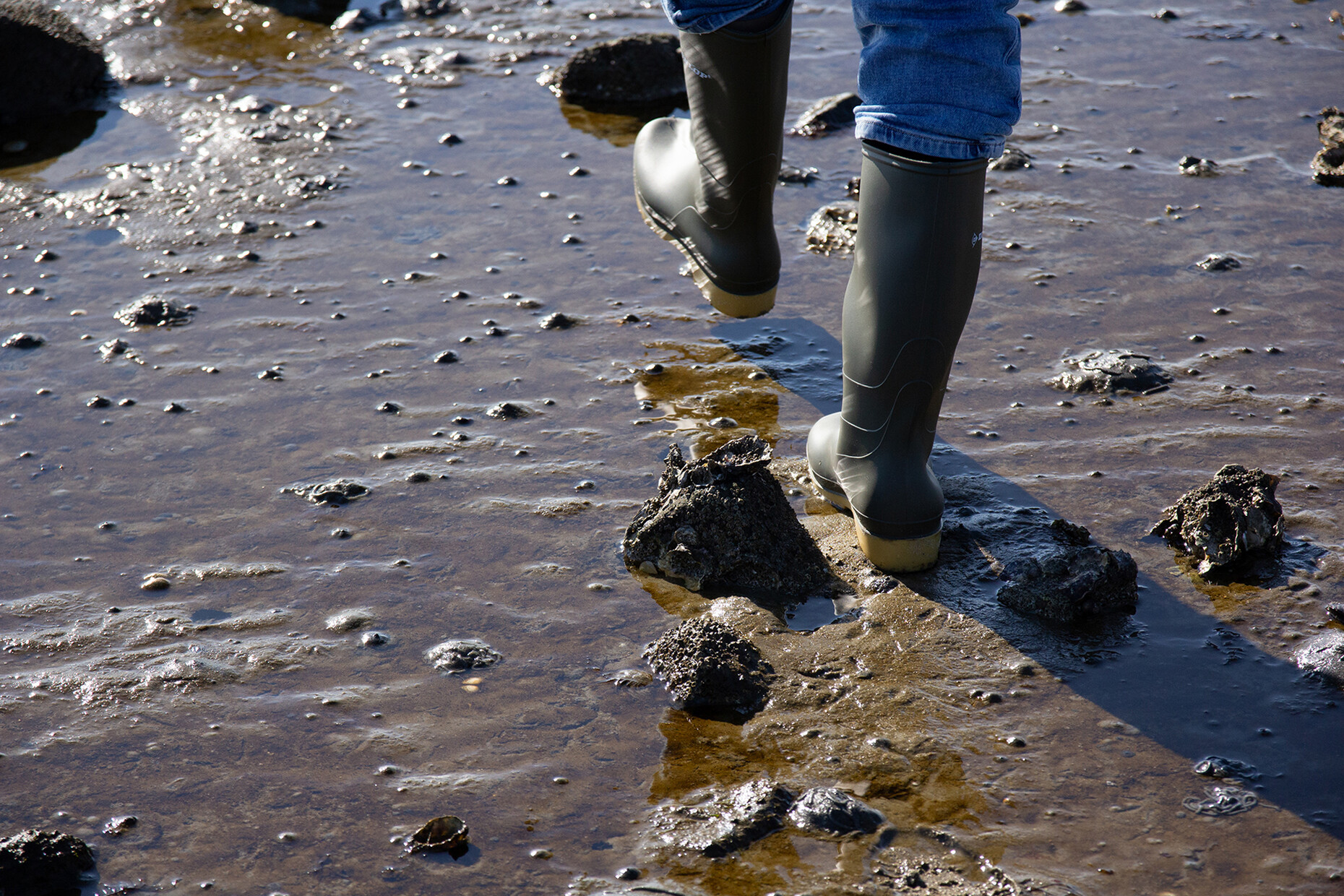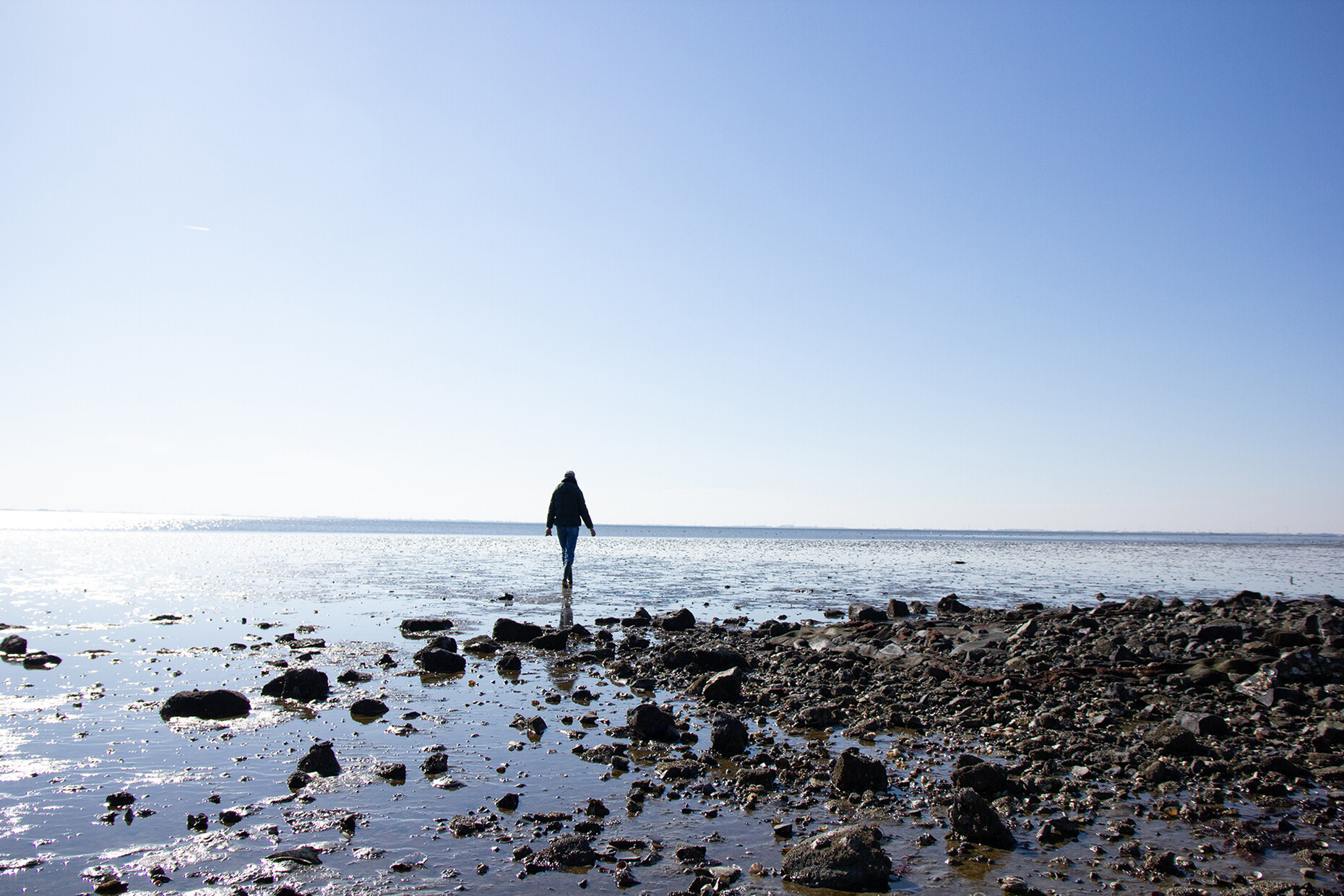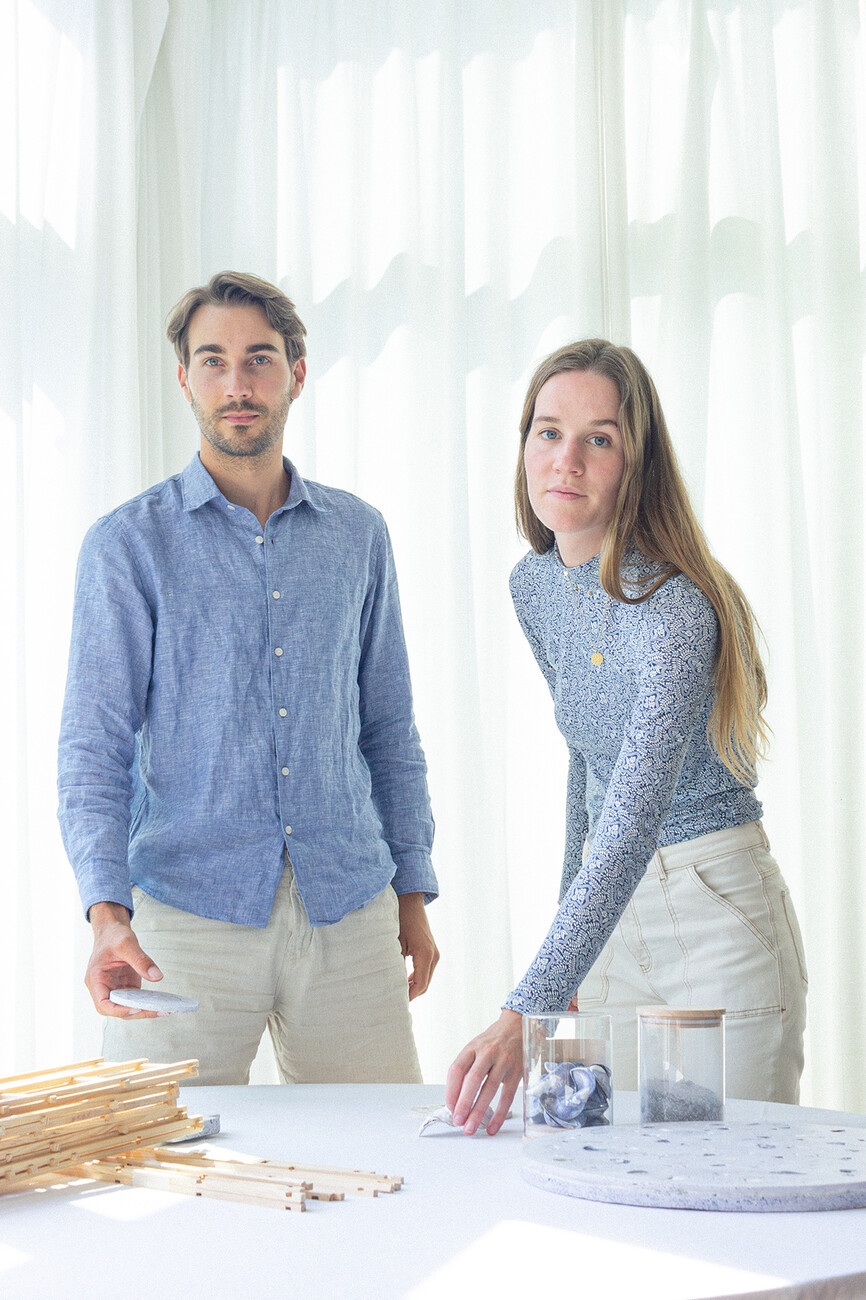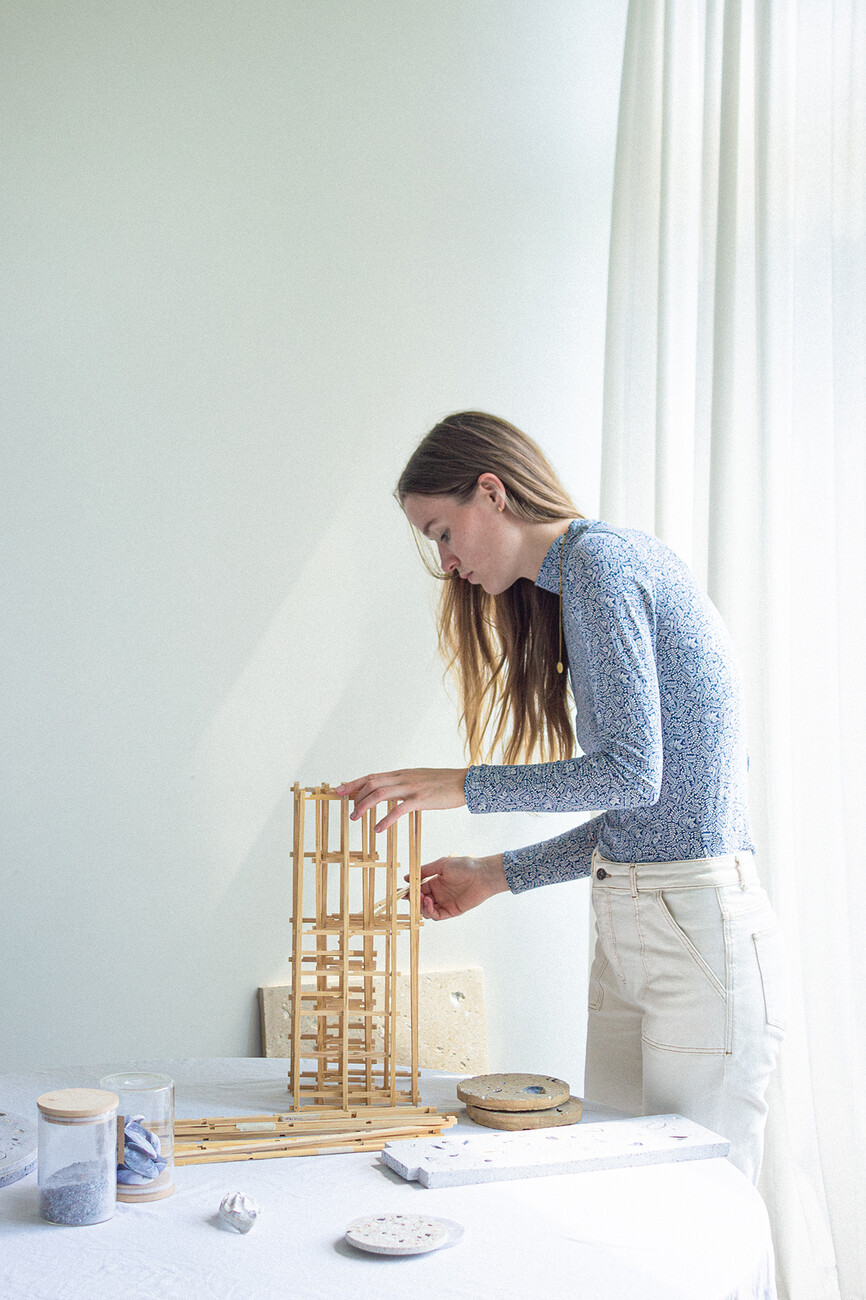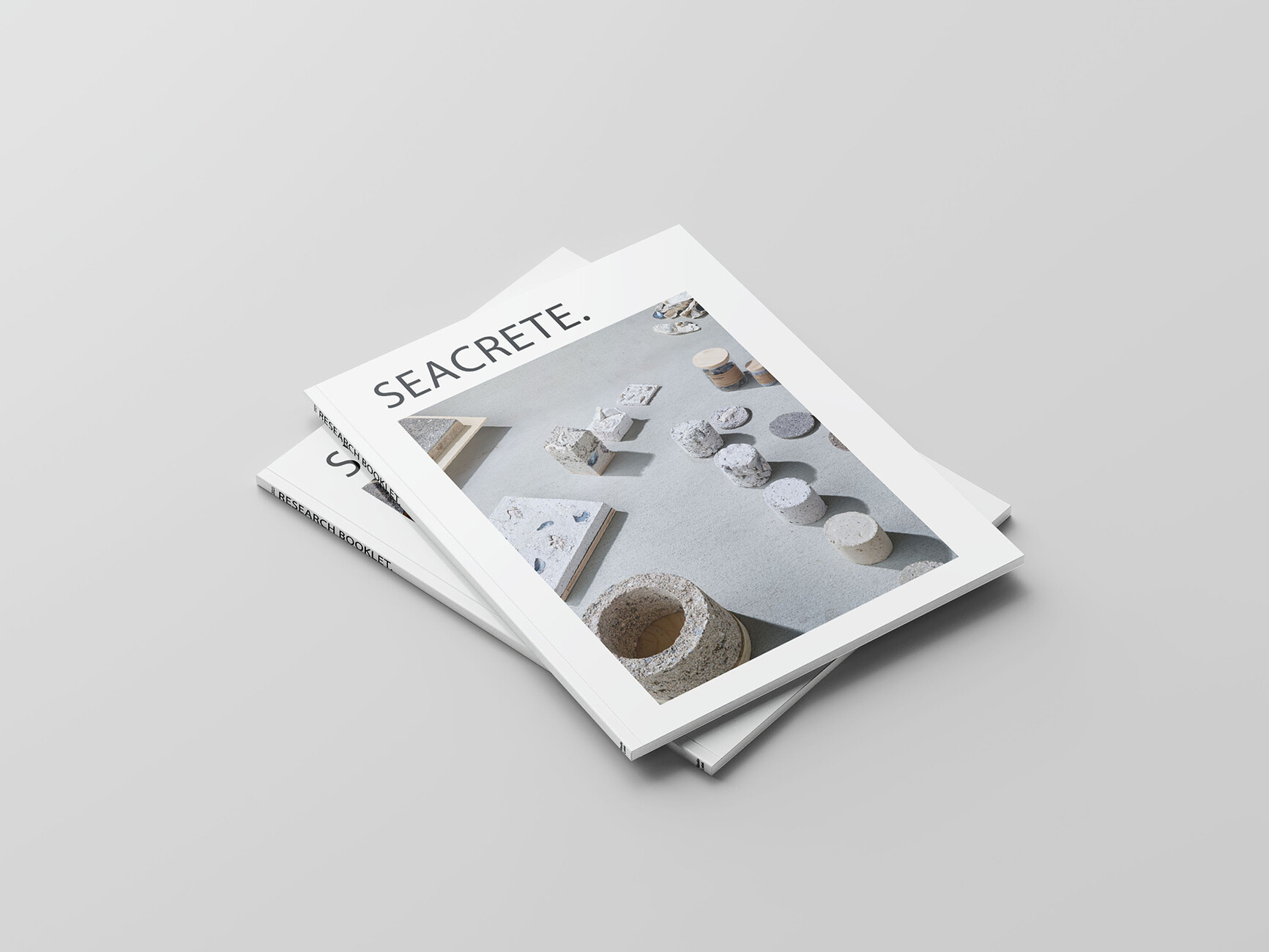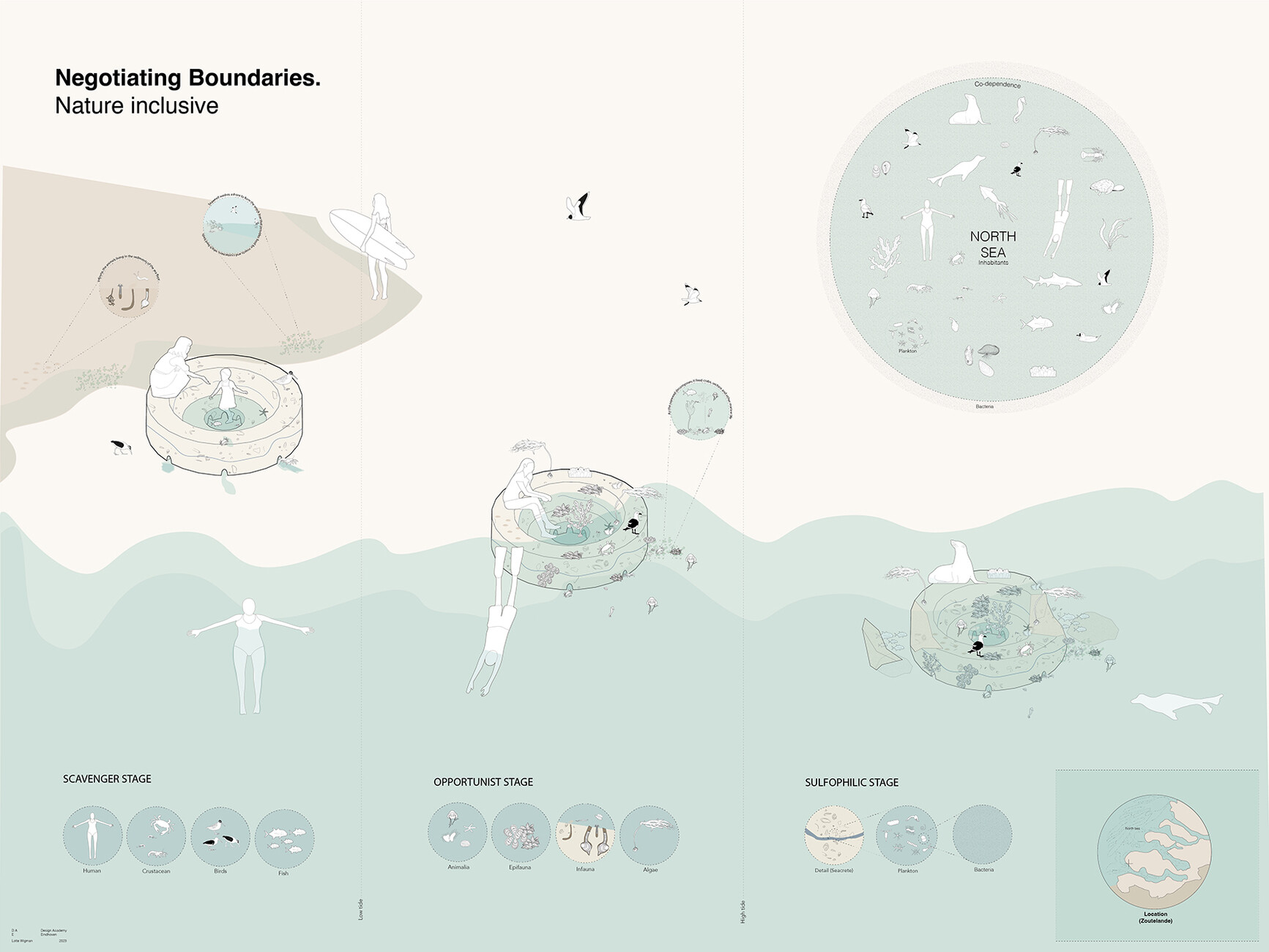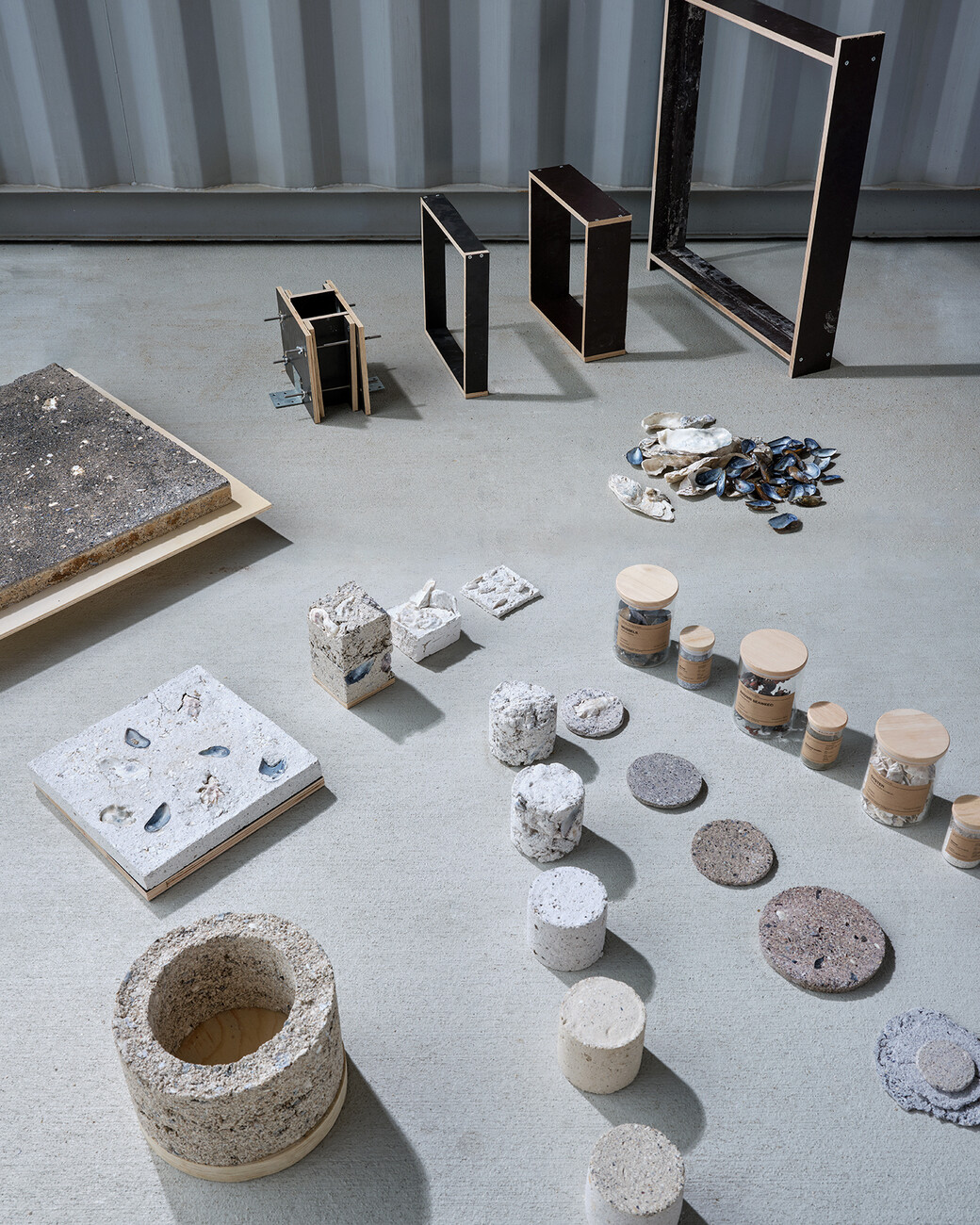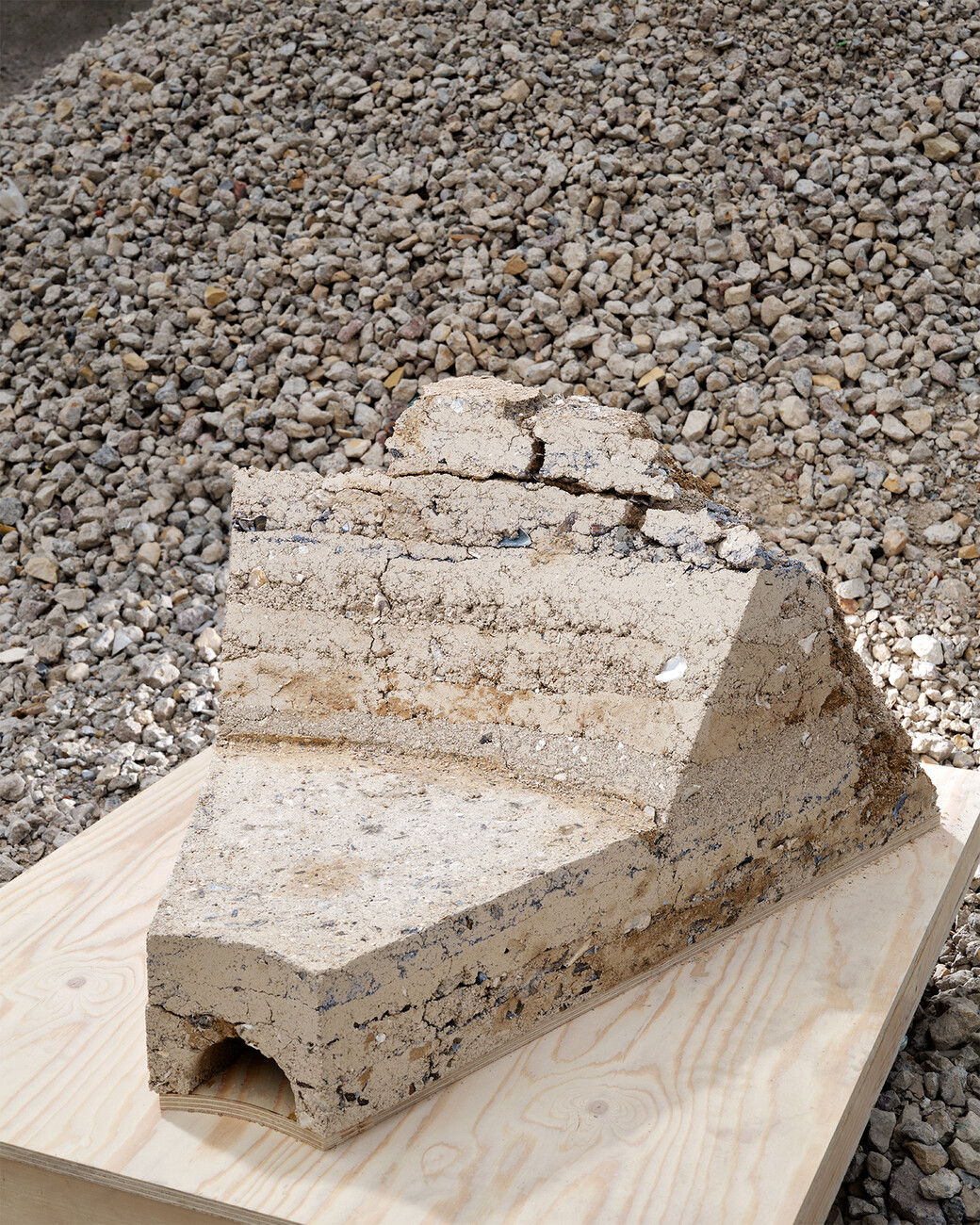YOUNG TALENTS
Launched from the Sea
Lotte Wigman has been working under the programmatic name for some time. It is made up of "Lo" for Lotte and "tek" for traditional ecological or environmental knowledge. "It refers to the knowledge of how to utilise nature as well as the knowledge inherent in nature," explains Ludo Poot, who recently joined the studio. "TEK" is a concept documented by Harold Colyer Conklin, an American anthropologist known for his studies of indigenous ways of understanding the natural world. Lotte got to know about Conklin's studies in 2019 when researching indigenous knowledge. She recalls: "Prior to that, I already had discovered Glen Albrecht through books and documentaries and became fascinated by the 'Symbiocene,' an era in which humans, nature, and technology create a new balance, which I felt had a deep connection with "TEK". Inspired by these ideas, I started to design for the Symbiocene." The young Dutchwoman has been working with the existing knowledge of the natural environment since her design studies in Eindhoven. "Through my design studies and my exchange semester in Iceland, I realised that I wanted to take my passions seriously and that I wanted to engage with history and nature," summarises Lotte. The openness of the professors in Eindhoven supported her in this by asking questions such as: How do you see the world? What do you want to do? "I found it very interesting that the answers to these questions all had to do with my childhood and with things that I used to find very interesting. As a child, I collected stones, shells and all kinds of natural materials. I was usually to be found in the forest, on the coast or in the garden, building huts. And my parents introduced me to historical architecture, for example by travelling to Pompeii," she recalls.
Her observation that the recently built architecture of Iceland uses concrete, which has to be delivered by sea at great expense, was to become groundbreaking for her: "To be honest, I was quite surprised that they don't use any naturally available materials there, when there are huge amounts of rocks or volcanic rock, which the Romans also knew how to build with." Lotte began experimenting with existing materials, such as shell remains and seaweed, which are washed ashore in large quantities. And she researched how shells were used in vernacular architecture. With this initial approach in mind, she returned to Eindhoven and developed it further in the context of the Dutch fishing industry as her final thesis. The result is "Seacrete", a new type of building material made from shells and seaweed of which in Iceland she had created a stool that could be cast locally on the beach.
Shells and limestone have been used for building throughout history, but it was processed by grinding and then burning it using chemical processes. As with concrete production, the calcium oxide (quicklime) triggers the chemical reaction. Lotte explains: "I wanted to do it differently and looked for materials from the same ecosystem. Seaweed is also used as an adhesive in various cultures and countries. I came across a recipe from Japan that makes seaweed usable as glue for bookbinding. I used this recipe to make a glue from seaweed. Then I mixed the two and left them to dry in the air." The mixture binds with the glue and hardens by itself in the air thanks to the Calcium carbonate, alginate, and different proteins present. Energy is only needed to compact it. As with rammed earth, a roof must keep out heavy rainfall and larger pieces of shell serve as a kind of barrier to stop erosion.
After this ground-breaking project, it was a logical step for Lotte to further explore ecological building. That's why she subsequently decided to do a Master's in Ecological Architecture and moved to Barcelona in 2023 to do so.
Ludo also followed this degree programme. He previously studied Multimedia Design in Rotterdam and then Interactive Media Design in Breda. After ten years, he switched from digital to analogue: "I can imagine that this seems like a big step. For me, it was more of a logical development: from interactive digital design to interactive physical objects. I was always driven by designing things for the human senses that have an impact and create humane experiences, tell a story or that we can not only see and hear, but also smell and touch," Ludo explains his decision. There is something very logical and beautiful about working with natural materials and natural processes. Using materials from the region independently can be very inspiring in practice for the design and the process itself.
With their background in design, studying together with many architects was very insightful and inspiring for both sides. Their interdisciplinary approach and openness to new practices brought a broader perspective. Lotte describes: "Our way of thinking offered a different approach to design, for example we emphasised materials much more. The way of approaching the design of a space or object was therefore also different." And Ludo adds: "The architects were taught to observe specifications and guidelines. But what could it look like without following all these rules?". The practical approach of the study programme suited them both. They learnt about wood processing, from forest management to collecting, cutting and processing to a real usable product or building material. They also deepened their knowledge about design and construction of the built environment considering topics like ecological resilience, changing climate conditions, resource security or biodiversity.
Back in the Netherlands, the tasks in the young studio are not strictly divided. Both appreciate the reflection that is inherent in working on projects together. "With a counterpart, you have to scrutinise your ideas and decisions differently and justify them with arguments. This makes the process much more reflective - and the result can only benefit from this," Ludo is convinced. In general, Lotte delves deep into the subject matter and explores it in all directions. Ludo is the more technical part and asks more questions about how and why. He brings the threads together and draws conclusions about what can be made fruitful from Lotte's exploration. This promising collaboration is still in its infancy. A project they worked on together is "Negotiating Boundaries", for which they have already received a lot of attention and were shortlisted for the Kazerne Design Award 2024, among others.
"Negotiating Boundaries" is a proposal for how "Seacrete" could be used. They have designed a tidal pool from the "Seacrete", which – placed in the intertidal zone – mediates between sea and land. In terms of content, it is about the interaction between nature and humans. The idea for the tidal pool also comes from the natural basins that are formed on the coast and is also inspired by shell limestone (fossiliferous limestone) that gradually wears away, eroded by the wind and the sea. Lotte explains: "My idea was that we as humans would build these structures and that it could then be used and adopted by non-humans over time. We design more than just the first step of use. We designed something that can transform into something else." In "Negotiating Boundaries", Lotte and Ludo do not protect "Seacrete" from moisture to preserve it but place it in a location where it will be heavily stressed. "We are playing with decay and forcing the natural erosion process. We don't try to maintain structures that people can use but ask: How can you make something usable for people and then for non-humans with the rising sea level in mind?" explains Ludo. And Lotte adds: "It's also the idea, based in our home country, the Netherlands, of building on a piece of land that could possibly be flooded in a few years' time, and from which a biotope or habitat for other living creatures would then develop without harming the environment." In a test phase, Lotek would like to further develop "Seacreate" and test it on the coast in more saline waters, where other universities also carry out their trials. "Unfortunately, there are a lot of restrictions on this in the Netherlands, but we would of course like to set up the tidal pool at the beach and observe what happens over a longer period of time."
With their thoughtful yet grounded approach, the next thing they want to do is to design and build architecture. Lotte explains their plan: "With our background in wood construction, we can apply our materials research to a larger scale." They want to take their time and find out what ecosystems exist in the project's respective surroundings and what human and non-human needs are present there. Based on the local materials, they will examine how these can be processed.
